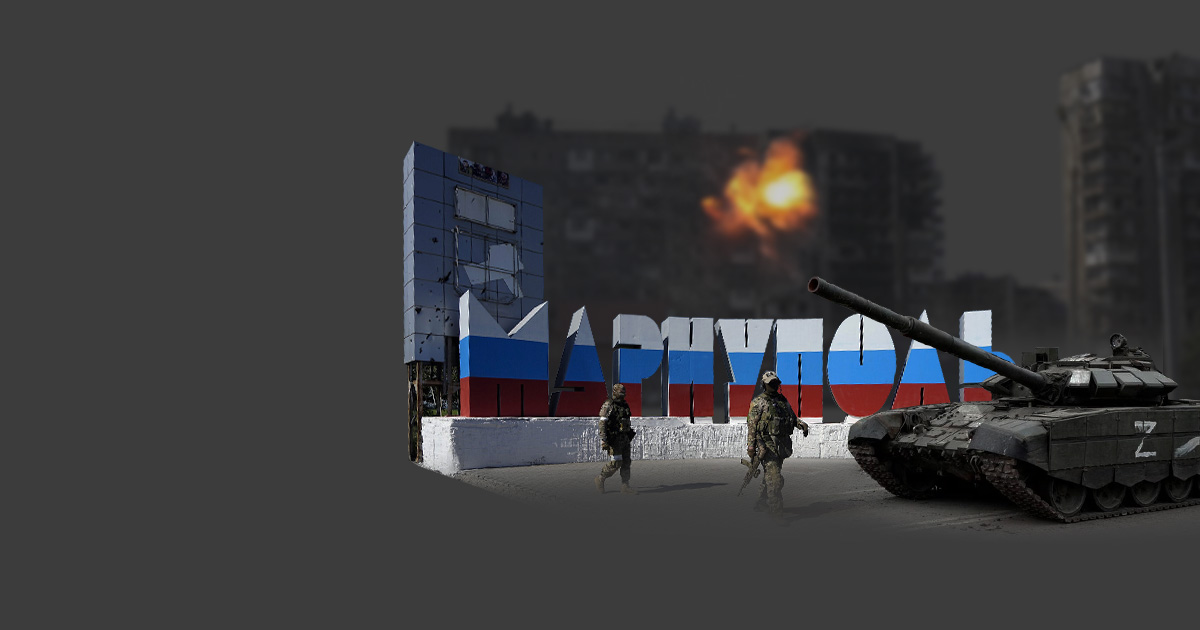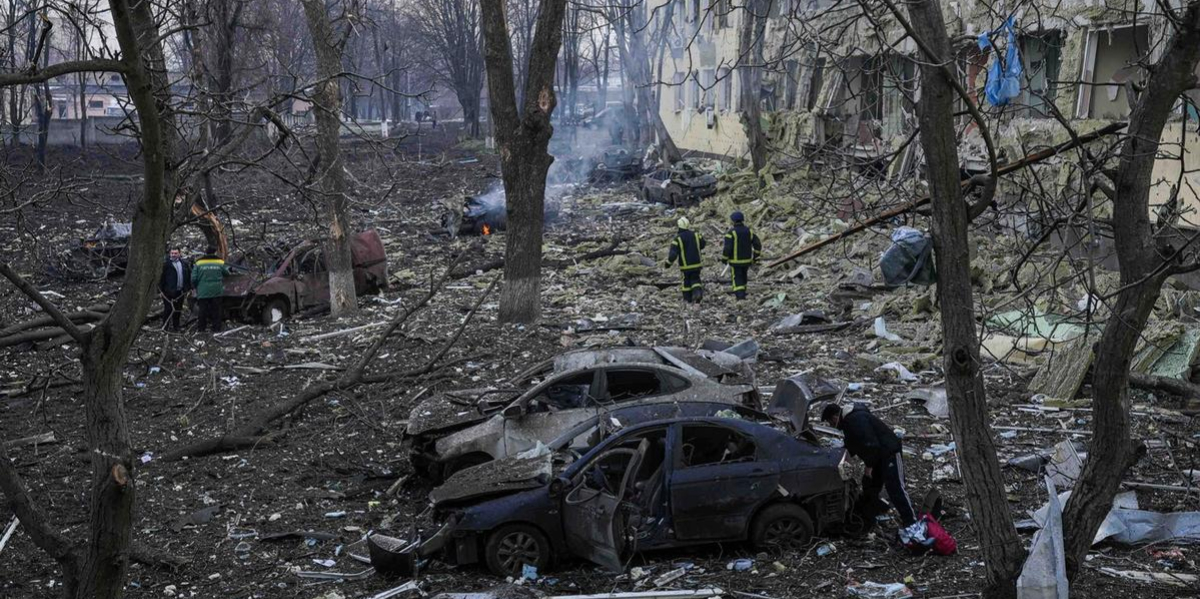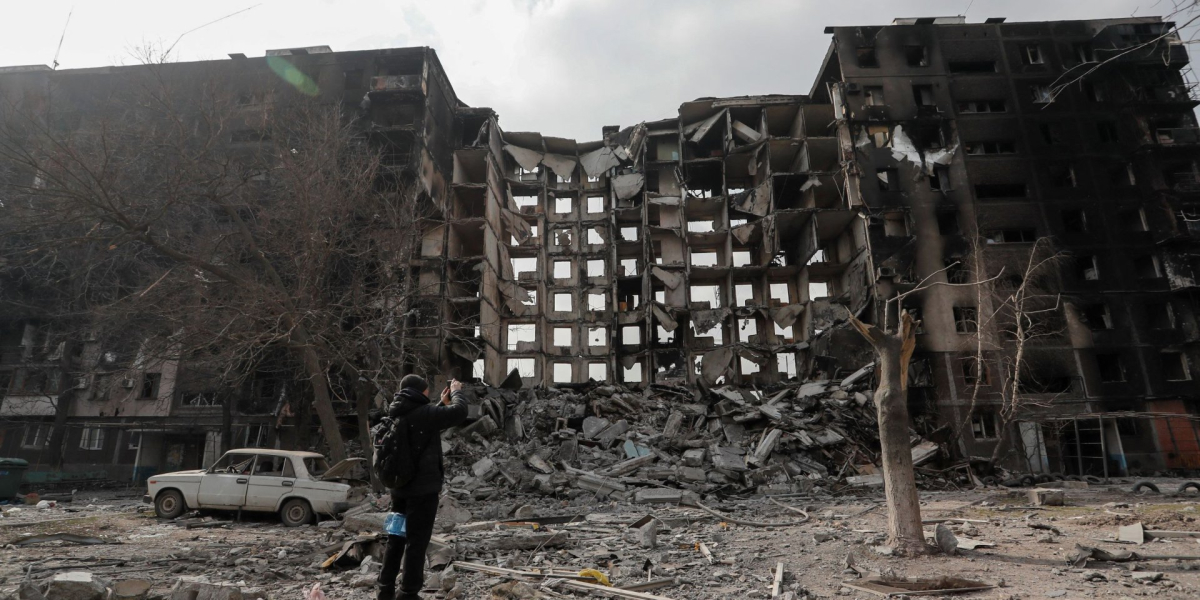Mariupol today: What is happening in the temporarily occupied city?

In March 2022, Mariupol experienced perhaps the biggest tragedy of the Russian-Ukrainian war. The Russian army quickly surrounded the city, which was home to more than 400,000 residents before the full-scale invasion.
The fighting for the city lasted from February 24 to mid-May, until the Ukrainian military surrendered at the request of the highest military and political command to save the lives of the wounded. Most of the buildings in Mariupol were destroyed or heavily damaged by Russian shelling.
The most serious crimes against humanity were committed in Mariupol. In 2022, on March 16 alone, between 300 and 600 people died during the aerial bombardment of the Mariupol Drama Theatre. The Russian military was not deterred by the "Children" sign on the pavement in front of the building.
During this time, more than 20,000 residents died due to hostilities, lack of food and water, and the cold. Those residents who were able to leave the city were forced to go through filtration camps.
Read about the life of the temporarily occupied city today in the article by Svidomi.
Concealment of crimes
In April, the Mariupol City Council began to report the use of mobile crematoria by Russians. The so-called 'clearing operation brigades', which included members of the illegal armed formation 'DPR' and local collaborators, were already operating in the city. Such actions were taken because of the publicity and condemnation of the massacres in the Kyiv region.

The first mass graves began to appear in March 2022. Satellite imagery showed that the largest mass graves of Mariupol residents are located near Manhush, at the cemetery in Vynohradne, and in Staryi Krym. There is also a mass grave near the historic Nekropol cemetery in the city centre.
According to BBC journalists, from June to October 2022, 1,500 new graves appeared at the mass grave site in the Staryi Krym area. In total, since the beginning of the full-scale war, Russians have dug 4,600 graves at this site. However, it is impossible to determine how many people may be buried there.
Updated data is impossible to obtain because in June, Russians began demolishing houses that were destroyed during the hostilities. The sites of demolition of the houses are heavily guarded, and everything that remains after the demolition is taken to a landfill in the Livoberezhnyi district. It can only be assumed that people who were under the rubble ended up at the landfill.
Destruction of architectural monuments
This was the practice Russians used when, at the end of 2023, they demolished the ruins of the drama theatre, which had been hit by a Russian air strike on March 16, 2022. At that time, up to a thousand people could have been in the theatre. According to city officials, the likely death toll is 300; Associated Press journalists, citing eyewitnesses, reported as many as 600 dead.
During the destruction of the drama theatre building, the back and central parts of the theatre were completely dismantled, i.e. only those parts of the building that served as the proof of the bombing. Russians left the front part as a "basis for reconstruction."
When dismantling damaged and destroyed buildings in Mariupol, Russians destroy historical monuments. For example, in January 2023, the Clock House was demolished, although they had promised to reconstruct it. This building was the studio of a monumentalist artist and Stanford University teacher Viktor Arnautov.
To conceal the destruction of buildings, the Russians are removing data about them from Yandex Maps, but they can still be found on Google Maps. This is done solely for internal propaganda to mask the consequences of their crimes.
Housing issues
After the full occupation of the city, the occupation administration faced the need to build housing for those Mariupol residents who remained in the city. They promised to build 1,500 apartments but instead commissioned only 80. According to Russians, about 200,000 people allegedly remain in the city (the Mariupol City Council provides data about 100,000 people — ed.).

In February, it became known that Russians refused to provide housing to at least 2,500 residents. They planned to demolish 50% of the high-rise buildings (at least 36,000 apartments). However, due to funding problems, most of the buildings that the occupation administration had listed as "for demolition" will now be converted into dormitories.
Medical care and mortality
According to the Ukrainian Healthcare Centre (UHC), 80% of Mariupol's medical infrastructure has been destroyed. There are not enough doctors in the city to provide quality care to the population; there is also a lack of the necessary amount of medication.
Mayor Boichenko claims that even if there are medicines, their price is 5-7, and for some drugs, even 10 times more expensive, and the medical equipment that survived is taken away. Ambulances do not come to the wounded and sick.
Advisor to the mayor Petro Andriushchenko adds that if we exclude all those killed and buried in the mass graves, the cemetery in Mariupol is now growing by about a year's worth of graves in a month.
Turning the city into a military base
The Strategic Communications Directorate of the Office of the Commander-in-Chief of the Armed Forces of Ukraine reports that Russia is turning occupied Mariupol into a military base. This is evidenced by the transfer of the majority of large construction projects to the Military Construction Company, one of the official developers of the Russian Ministry of Defence.
During the occupation of Mariupol, the company has already managed to build a large hospital for the Russian military, which is not accessible to civilians. The company is also involved in the demolition of buildings in residential districts 3 and 4, where they plan to build housing for the military.
Convoys of Russian military equipment are constantly seen in the city, moving in the direction of occupied Melitopol and Berdiansk. Andriushchenko also suggests that Russians are turning the seaport in Mariupol into a military base. They have fired almost all local employees, and workers who came from Russia are taking their place. Work is currently underway to divide the berths into civilian and military ones.
Russian ships with construction materials and containers with unknown cargo are now entering the port.
Resistance
Despite all the difficulties of living under occupation and Russian propaganda, there are people in Mariupol who are waiting for the city to be liberated. They have united in a resistance movement: they distribute leaflets, make the "Glory to Ukraine" and "Glory to the Ukrainian Armed Forces" graffiti, and inform about the movement of Russian military equipment and local collaborators.


